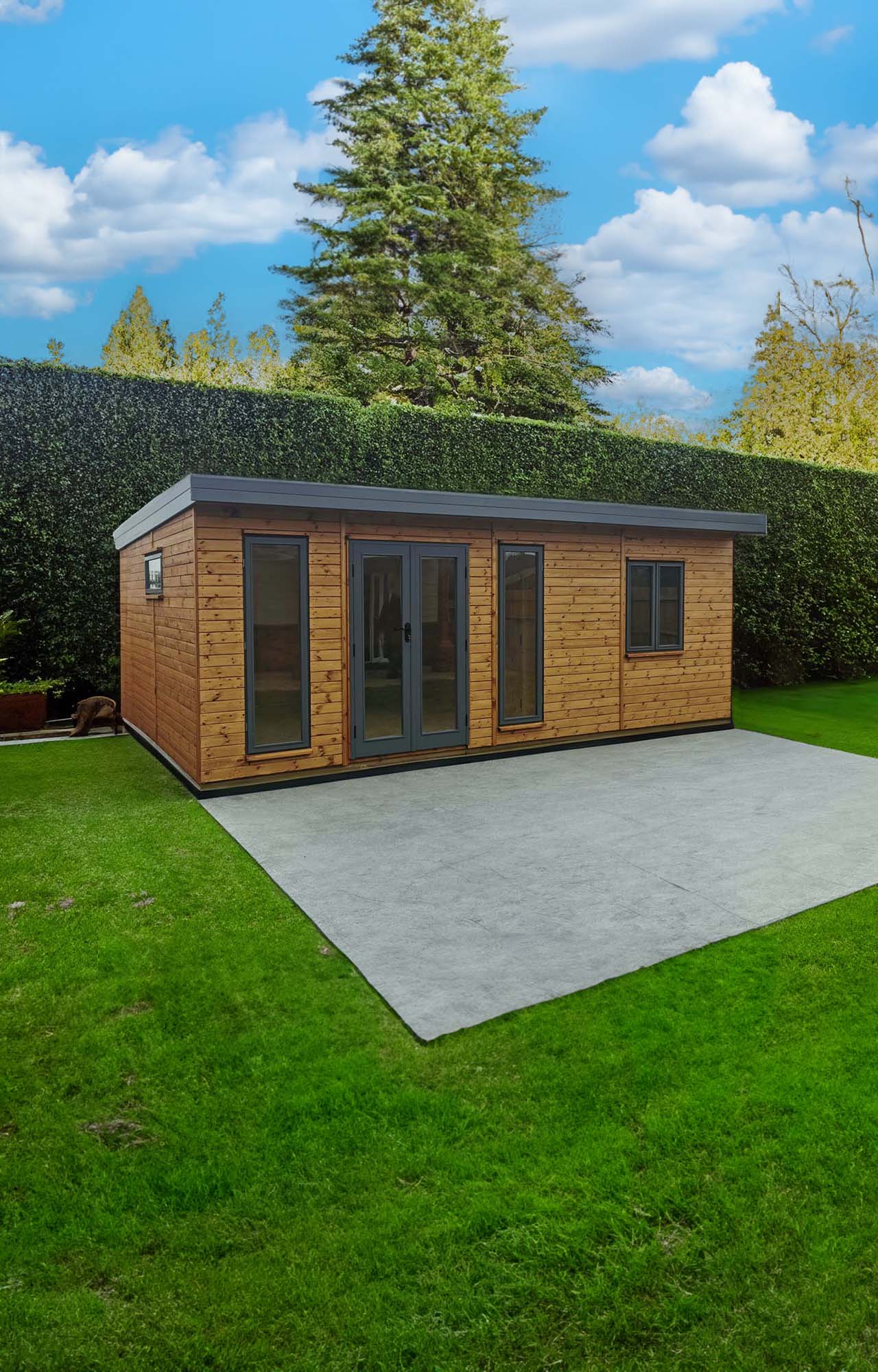LOG CABIN AFTERCARE
We supply hundreds of our products every year to satisfied customers. We take pride in using high quality redwood timber sourced directly from Scandinavia. All of our timber products are manufactured in our Essex-based factory and once assembled on site will continue to react to weather conditions and the internal environment within the building, due to the nature of the material. This is normal, wood is a natural product and different shipments include colour differences, a level of knotting and in some cases splits- all of which have been allowed for in the design. There may be some swelling or shrinkage of doors and windows- resist temptation to plane edges off doors and windows as over time the units should return to the manufactured size. You should keep the areas around the cabin clear and minimise collection of water under or around the pressure treated floor joists. In some circumstances you may consider retrospectively fitting guttering.
TREATING AND MAINTAINING YOUR GARDEN BUILDING
To protect the building and extend longevity of life we recommend you periodically treat your product within time parameters specified for the treatment used, usually once a year. Your cabin has been sealed along each external joint with silicone, when treating you should inspect the silicone seals and if necessary strip and replace them. We recommend you periodically remove any debris and leaves from your roof to maintain the longevity of your garden building. Use only a soft brush safely on a long handle to prevent any unnecessary damage to the roofing material.
SETTLING OF THE WALL LOGS AND APPEARANCE OF GAPS
The logs in your cabin are interlocked at the corners and locked together either by steel rods or by storm and baffle boards running down the side of the cabin. The end of each roof joist is connected to the logs by150mm screws and the baffle boards and storm boards pick up these logs to secure the building. These boards effectively connect the logs (with bolts or screws) and provide extra strength along the walls. They are easily identifiable slotted boards which allow the logs to expand and contract over time. If you do get gaps in your cabin they are generally more likely to form in the first two years of the cabins life than at any other point as the cabin settles and adjusts to the base and weather conditions. In most cases, if gaps form, the storm and baffle boards may need to be loosened temporarily to allow the boards to drop and settle. After approximately 2 years the cabin will be virtually fully settled, and the baffle and storm boards can be fully tightened. This should be done at a dry time of year when the logs are at maximum shrinkage. At this time we would even recommend fitting extra fixed screws along the boards to provide extra longevity and strength. You should be very careful of attaching any fixed boards, studwork, conduit etc. across during the settlement period as this can hold up the boards, stop the full settlement and create gaps between logs.
USE OF CABIN, FIREPROOFING AND ANCHORING
As notified in our terms and conditions of sale the cabins are sold as storage and agricultural units not designed to building regulations for accommodation or residential use. Depending on the chosen use of your cabin, it may have ventilation requirements which can be retrospectively fitted. Depending on the size, use and location of your building it may require a fireproof treatment. We recommend Flametect C-WD for wood, clear flame retardant. Your cabin is sold as a portable building and you should conduct your own risk assessment as to the location of the building to assess whether it requires extra anchoring- this is particularly recommended in the case of beach huts or similar exposed locations.






